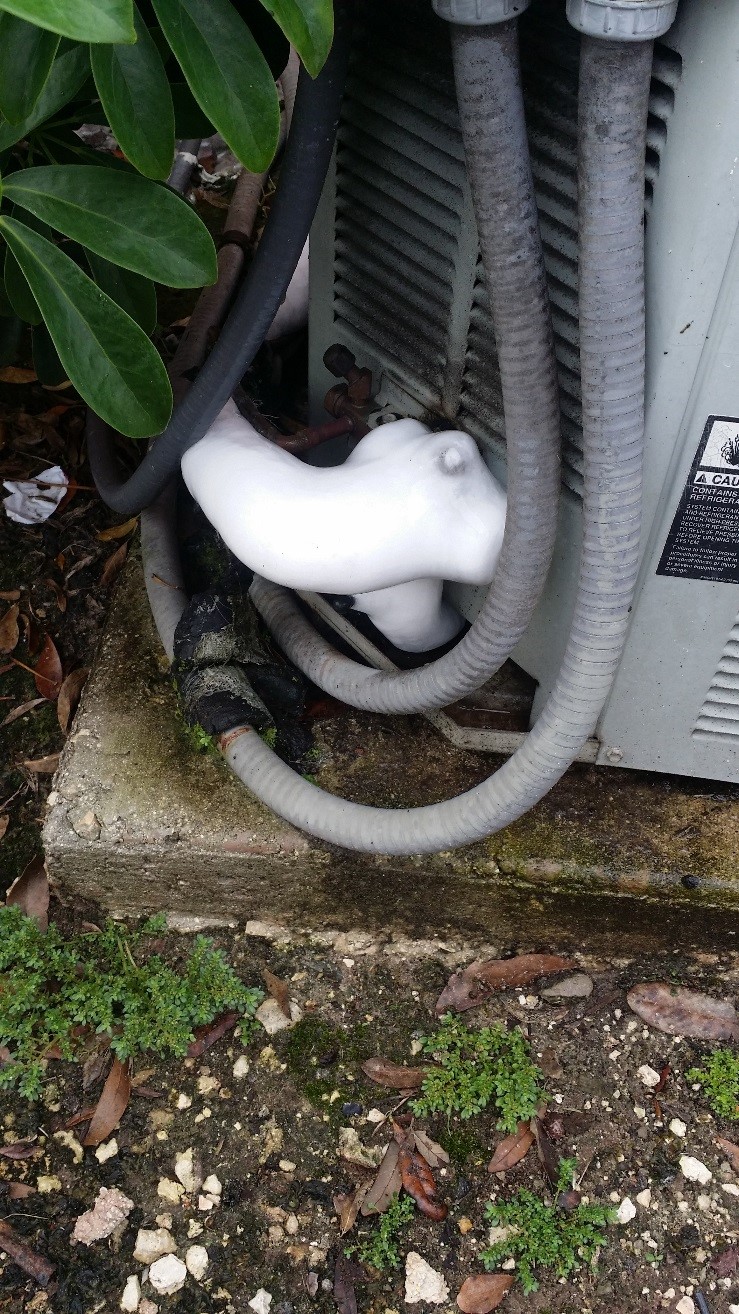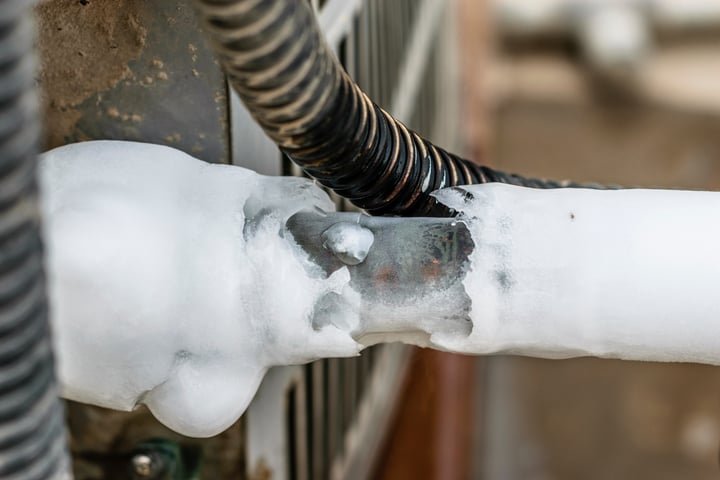The Air Conditioner Pipe Is Frozen Solid - What Do I Do? Steps for Remedy
The Air Conditioner Pipe Is Frozen Solid - What Do I Do? Steps for Remedy
Blog Article
The article which follows in relation to Why Is Ice On My Outside Air Conditione is totally fascinating. Have a go and draw your own personal final thoughts.

Introduction
Discovering that your AC pipe is iced up can be worrying, particularly during warm summer months when you rely on your air conditioner the most. Comprehending what to do in such a circumstance is vital to avoid further damage to your air conditioning system and guarantee your comfort inside.
Comprehending the Causes
Numerous aspects can add to the freezing of an air conditioner pipeline. Understanding these reasons can help you attend to the concern successfully.
Absence of Airflow
One common reason for an icy a/c pipeline is inadequate air movement. When the airflow over the evaporator coil is restricted, it can cause the coil to go down below freezing temperature, causing ice development on the pipeline.
Reduced Refrigerant Levels
Inadequate cooling agent degrees in your AC system can also cause an icy pipe. Low refrigerant degrees can trigger the pressure in the system to go down, leading to the cold of wetness on the evaporator coil.
Winter Conditions
In colder climates, freezing temperature levels outside can contribute to the freezing of air conditioning pipes. If your air conditioning unit is not effectively shielded or if there are leaks in the ductwork, cold air can penetrate the system, creating the pipe to ice up.
Dirty Air Filters
Filthy or blocked air filters can restrict air movement in your air conditioner system, causing different concerns, including a frozen pipeline. It's vital to change or cleanse your air filters frequently to guarantee correct air flow and prevent ice accumulation.
Signs of a Frozen Air Conditioner Pipe
Acknowledging the signs of an icy air conditioning pipe is critical for timely activity.
Reduced Airflow
If you notice a considerable decrease in airflow from your vents, it can suggest a frozen pipeline.
Ice Buildup on the Pipe
Visible ice build-up on the refrigerant line or the evaporator coil is a clear indicator of a frozen a/c pipe.
Strange Sounds from the Unit
Uncommon sounds, such as hissing or gurgling, coming from your air conditioning system can signify that there's ice present on the pipeline.
Immediate Actions to Take
When faced with an icy air conditioner pipe, it's essential to act rapidly to stop further damages to your air conditioning system.
Turning off the air conditioning
The very first step is to turn off your a/c to prevent the system from running and intensifying the concern.
Looking for Blockages
Inspect the area around the interior device for any blockages that might be obstructing air flow, such as furnishings or curtains.
Thawing the Pipe
You can make use of mild approaches like positioning towels soaked in warm water around the frozen pipe to assist thaw it slowly.
Safety nets
Taking safety nets can aid prevent future events of an icy air conditioner pipe.
When DIY Methods Fail
If your attempts to thaw the pipe or address various other issues are unsuccessful, it's time to call a professional.
Relevance of Hiring a Professional HVAC Technician
A certified HVAC technician has the competence and devices needed to detect and repair issues with your air conditioning system safely and efficiently.
Routine Maintenance Checks
Schedule regular maintenance talk to a professional HVAC technician to ensure that your AC system is running successfully.
Altering Air Filters
On a regular basis change or clean your air filters to prevent airflow limitations and preserve ideal performance.
Insulating Exposed Pipes
If your air conditioner pipelines are subjected to chilly temperatures, consider shielding them to stop cold during winter months.
Seeking Professional Help
If DIY approaches stop working to resolve the problem or if you're unclear regarding exactly how to proceed, it's best to seek aid from a certified HVAC specialist.
Conclusion
Handling a frozen AC pipeline can be an irritating experience, however knowing how to react can help decrease damages and restore convenience to your home. By comprehending the causes, identifying the signs, and taking punctual activity, you can effectively resolve the issue and stop future occurrences.
What to Do If Your AC Line Is Frozen
Make Sure All Supply and Return Air Vents Are Open
If you notice problems with airflow, the first thing you should do is check your supply and return vents. Supply vents distribute clean, conditioned air throughout your home. As this air becomes stale, it’s pulled into the return vent, where it’s reconditioned before being sent back out through the supply vent.
When these vents are closed, air won’t flow in the home. Before examining your AC, check the vents in every room and ensure they’re all open.
Check for a Dirty Air Filter
Another possible cause of limited airflow is a dirty air filter. Your air conditioner’s filters catch elements you don’t want to breathe in, such as dirt and dust. Over time, filters can become clogged, ultimately blocking air from flowing in and out. The lack of airflow can then cause the entire coil to freeze and will completely restrict any air from moving through it. The AC may need to be powered off for one to two days to allow the coil to thaw after replacing the filter to allow proper functioning of the unit. This debris can also accumulate on your AC’s evaporator coil, requiring a more serious repair. In general, air filters should be cleaned regularly (about every two weeks).
Assess Your Outdoor Unit
In addition to checking your AC, assessing the outdoor unit is a good idea. Also known as the condensing unit, it works with your interior unit to release heat outside. An issue with the outdoor unit can result in rising internal temperatures.
Overgrown Shrubs or Clogged Leaves
From leaves and twigs to shrubs and debris, there’s no shortage of outdoor elements that can accumulate around your condensing unit. When these elements get lodged inside the unit, they can block airflow. Fortunately, removing the blockage can solve the problem.
Sounds of a Broken Fan
Shrubs and leaves aren’t the only things that can impede your outdoor unit’s airflow. If the fan is broken, the unit won’t be able to properly get rid of heat — which means the internal temperature won’t go down. First, make sure the fan is spinning. If it is, check for the following sounds of a broken fan:
Buzzing Rattling Screeching Hissing Clicking Preventative Measures
Nobody wants to deal with a frozen AC line. In addition to causing problems with your air conditioner, they require professional repairs. On the bright side, there are preventative measures you can take to help ensure this issue doesn’t arise in the first place.
https://www.coopergreenteam.com/blog/what-to-do-if-ac-line-frozen

We were introduced to that article on What Do I Do If My AC Pipe Is Frozen through a friend on a different website. Make sure you set aside a second to distribute this post if you appreciated it. Thank you for your time. Visit again soon.
Request Appointment Report this page